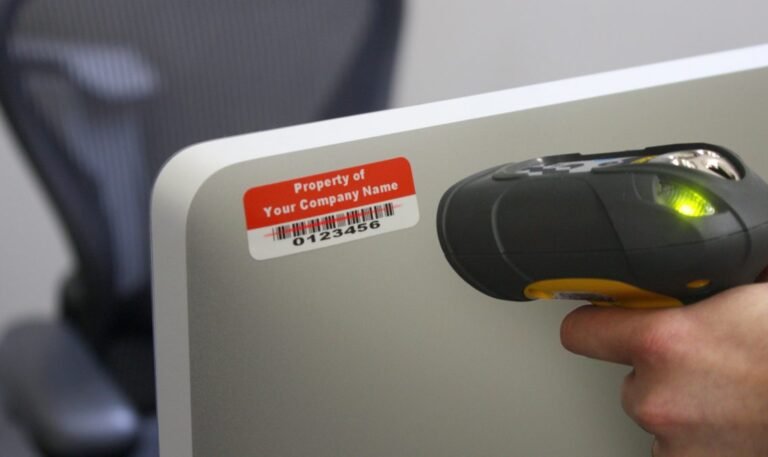Maintaining proper compliance and security measures is paramount in today’s fast-paced business world. This holds true for organizations across all industries, irrespective of their size. One often overlooked tool that plays a significant role in achieving compliance and enhancing security is asset tags. In this guest post, we will delve into the importance of asset tags and how they contribute to maintaining compliance and bolstering security in a variety of contexts.
What are Asset Tags?
Asset tags are physical labels or tags attached to various items within an organization. These items can be anything from office equipment, IT devices, machinery, vehicles, or even sensitive documents. Asset tags typically contain identifiers such as unique serial numbers or barcodes that enable easy recognition and tracking.
Enhancing Compliance
Maintaining strict compliance with internal policies as well as external regulations is crucial for any organization. Asset tags provide a valuable mechanism for managing compliance in multiple ways.
1) Accurate Documentation: Having asset labels affixed to different assets ensures accurate documentation at all times. The presence of readable information on these labels eliminates ambiguity and allows for efficient record-keeping regarding inventory management, maintenance schedules, and relevant disposal procedures.
2) Simplified Audits: Regular audits are necessary to ensure adherence to protocols and standards. The inclusion of asset tags greatly simplifies the auditing process by providing quick access to relevant information about each item being audited. Updated records help auditors promptly identify any discrepancies or non-compliance issues.
3) Regulatory Requirements: Many industries face specific regulations governing asset handling, storage, and disposal. Organizations can ensure full compliance with sector-specific guidelines by utilizing comprehensive asset tagging systems that link directly to specific regulatory requirements associated with individual items.
Strengthening Security Measures
Keeping your organization’s assets secure is equally vital in today’s digital age, where privacy breaches can have severe consequences, such as regulatory penalties or irreparable damage to a company’s reputation. Asset tags assist in enhancing security measures by providing the following benefits:
1) Theft Deterrence: Visible asset tags act as effective deterrents against theft. They signal to potential thieves that assets are accurately tracked and traceable, dissuading them from targeting these items in the first place. The risk of arrest and prosecution further discourages illicit activities.
2) Quick Verification: Asset tags allow for swift identification and verification of personnel and assets in high-security environments, such as restricted areas within organizations. By simply scanning or visually confirming asset labels, security personnel can ensure that only authorized individuals have access to sensitive areas.
3) Recovering Stolen Items: Unfortunately, theft can still occur despite preventive measures. However, if labeled assets get stolen, they become easier to identify and track down. Properly tagged items increase the likelihood of recovery through cooperation with law enforcement agencies or even independent investigations.
Integrating Asset Tags into Various Contexts
Asset tags can be adopted across different industries and sectors, each with specific compliance and security challenges and requirements.
1) Healthcare Sector: Asset tags are invaluable in identifying medical equipment such as ventilators or vital sign monitors in hospitals or other healthcare facilities. Precise inventory management facilitated by these tags ensures proper maintenance schedules for equipment uptime while complying rigorously with strict regulatory guidelines imposed on healthcare entities.
2) Information Technology Services: For companies providing IT services or managing their own IT infrastructure, effective tracking of hardware devices is crucial for ensuring accountability as well as maintaining data integrity during audits. Asset tags aid in keeping an updated inventory record of devices such as laptops, servers, or network switches—assisting organizations in safeguarding sensitive corporate information against unauthorized access.
3) Manufacturing Industry: Manufacturing entities face diverse compliance regulations while managing multiple pieces of machinery distributed across extensive floor areas. Tracking machine maintenance logs and adhering to internal safety protocols can be simplified through asset tags. These labels streamline the process of identifying, maintaining, and periodically inspecting machinery while ensuring compliance with industry-specific standards.
Conclusion
Asset tags play an instrumental role in maintaining compliance and strengthening security measures in a vast array of contexts. From accurate documentation to theft deterrence, these physical labels considerably contribute to organizations’ risk mitigation and regulatory adherence efforts. By integrating asset tags within their operations, businesses can effectively enhance their compliance programs, bolster security measures, and easily safeguard against potential risks.

Daniel J. Morgan is the founder of Invidiata Magazine, a premier publication showcasing luxury living, arts, and culture. With a passion for excellence, Daniel has established the magazine as a beacon of sophistication and refinement, captivating discerning audiences worldwide.





